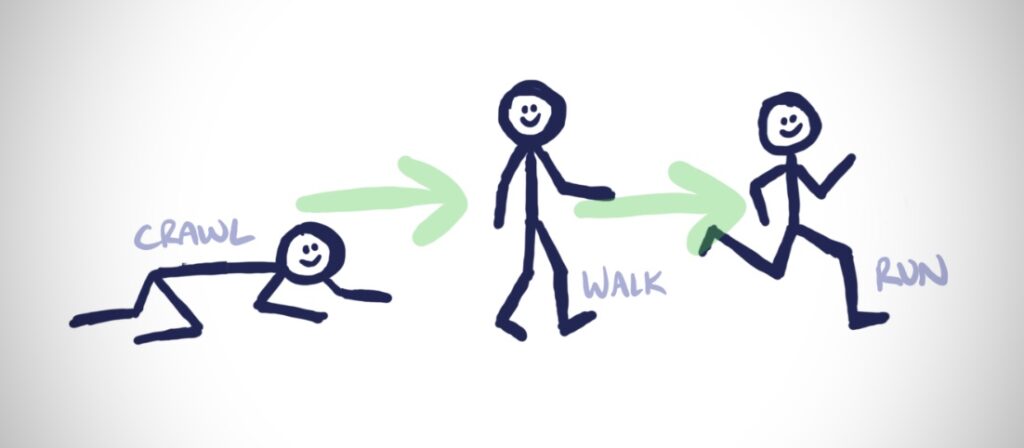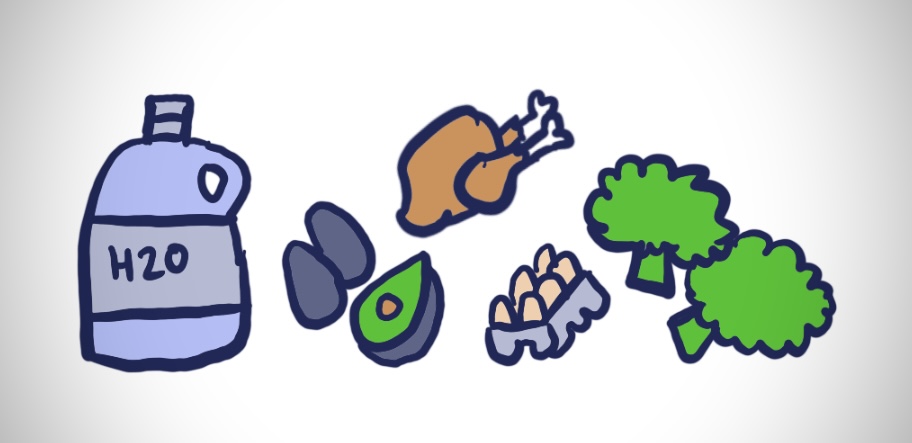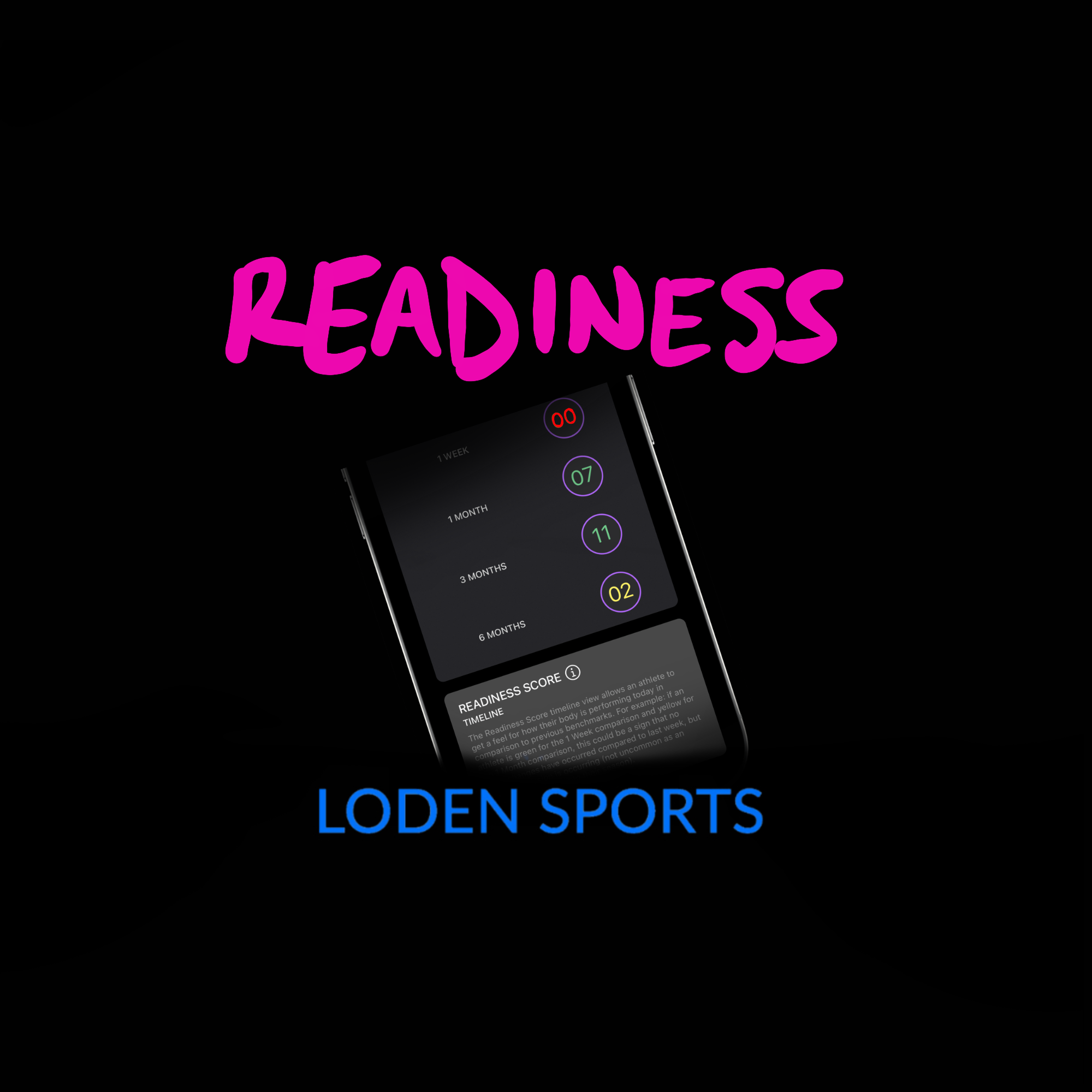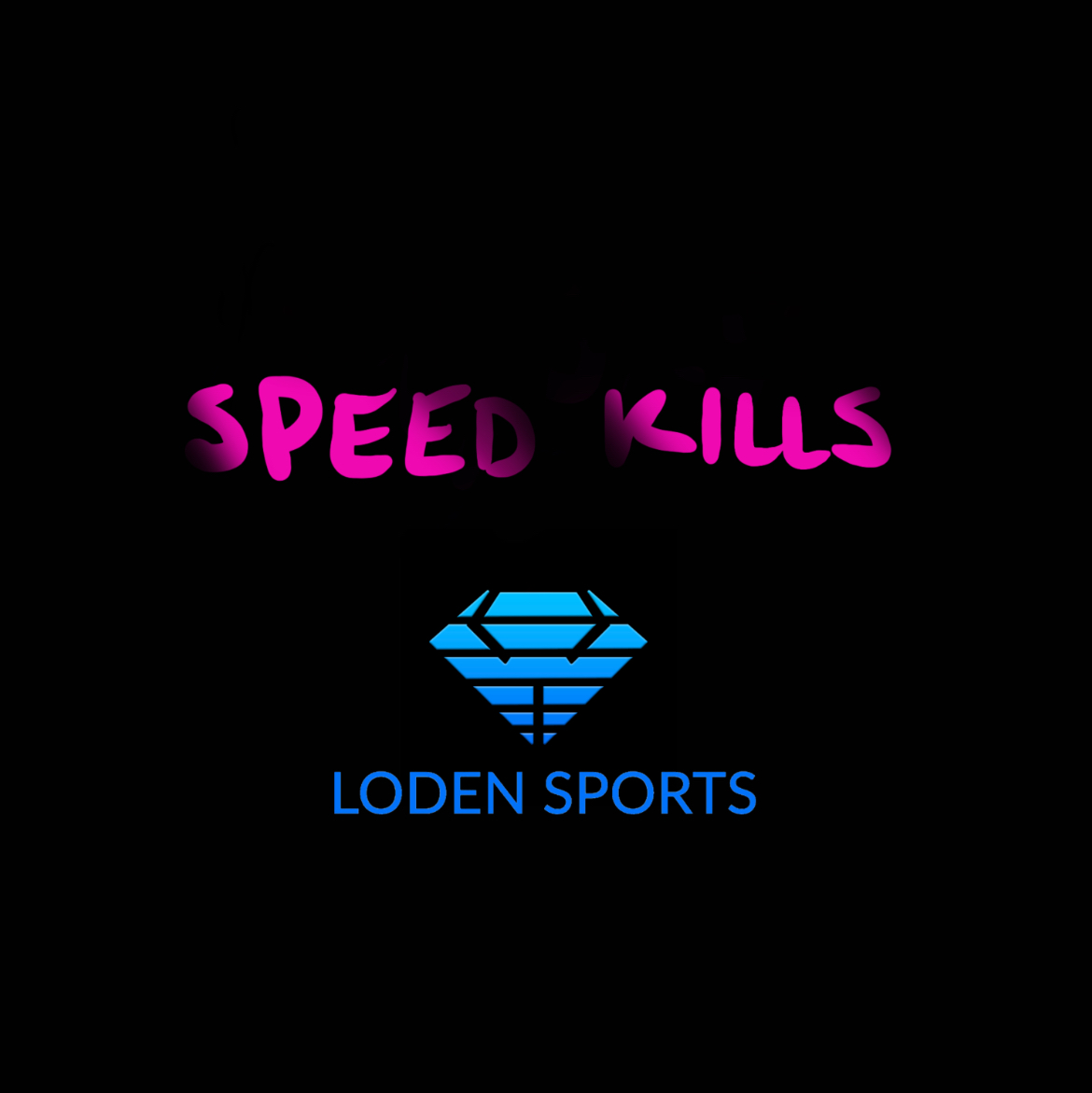
0-100 Doesn't Work for Most People
I think that we can all agree that going 0-100 in anything is usually a recipe for a quick burn-out and quit. Can we go 0-100? In a lot of things, yes. Can it be overwhelming? Also, yes. Is it overwhelming most of the time? Yes, again.

If you want to get good at something, or create a habit, the outlook for actually getting good at something or creating a habit that sticks is generally much brighter for those who wade into the shallows as opposed to jumping in the deep end. Crawl, walk, run. Got it.
Let’s check out a few examples for context:

Starting from zero, “crawl” looks way less daunting than “run” or even “walk” for the three example activities above. So, again, if you’re looking to get better at something or create habits that stick, consider crawling for a few weeks, then walking for a few weeks, and then running.
If you wade long enough, you’ll be in the deep end without shocking your system.
The 3 Thresholds of Improvement

Let’s build off of “walk-crawl-run” in the context of training with the three thresholds of improvement: Show Up, Work Hard, and Get into the Details. For some aspiring athletes, supplementing playing their sport with training is a no-brainer. They are motivated to train because they know it’ll help them reach their goals in their sport. For others, the link isn’t so obvious.
So, whether you’re an aspiring athlete that is trying to discover how to crawl for the first time or a competitive athlete that is looking to run and really fine-tune your efforts, or anywhere in-between… keep reading.
Show Up
In conversations with a couple different high school coaches recently, a reoccurring theme has been the importance of attendance. Yes, if you’re an athlete that is discovering how to crawl for the first time, you’re going to get better by just showing up. The lowest hanging fruit for your athletic development when you’re starting at square one, is just being present and going through your coach’s prescribed exercise plan with your teammates or peer group.
The aspiring athlete who shows up for training will improve more than their peers who don’t.
Work Hard
Okay, so now you’re “crawling.” You just went through an entire offseason program; attendance was great; progress has been made. This is easy.
Yes and no.
Showing up will get you out of the gate. You’ll make initial progress, but your body isn’t a machine and everyone in the room doesn’t get the same benefit from each workout. If you want to “walk,” you’ll find the teammates that show up and work harder than everyone else while they’re there and you’ll latch onto them.
The aspiring athletes that attend every session and put effort into every rep will get better, faster than the peer group that’s just going through the motions and checking the boxes.
Get Into the Details
“Walking” is a little bit harder than you thought. You have to come prepared to give it all you got every time you show up. It may be harder than you thought, but it’s clicking and you can see the results. You’re stronger. You’re faster. It’s translating in how you play your sport. But if you really want to “run,” the devil is in the details. So, what do we mean by get into the details?
We all know an athlete who is “addicted” to the grind. They work harder than everyone else in everything that they do. They pride themselves on it. It’s something you can’t teach, but it’s also important that all that hard work and effort, isn’t misdirected or isn’t working counter to that athletes’ goals. So, the details…
Are you training your body in the best way for your sport?
Yes, there are universal concepts that can benefit all athletes in training. For example, it’s never a bad thing to get faster. But if you’re a baseball player, it probably doesn’t benefit you to build your body like a linebacker on the football team. When you’re trying to “run,” understand the demands of your sport and attack them. If you are bulking up the wrong areas of your body and it’s restricting how your body needs to move for your sport, it’s time to get into the details and figure out what you need to be doing to optimize your body for the needs of your sport.
Are you recovering properly?
Let’s say you are the athlete who was “crawling.” You then found the hard-working teammates and you latched onto them. Now you’re trying to keep up. Why does it feel like these teammates never run out of energy? Aren’t they sore from yesterday? Now that you’re “walking,” and you’re trying to “run,” it’s time to get into the details and figure out all of the things you need to be doing once you leave training. The additional time you spend stretching or rolling out on a foam-roller are going to pay-off the next time you show up for training, so don’t skip the recovery.
How is your sleep quality?

Are you fueling your body appropriately?

Your diet doesn’t have to be perfect, but if you really want to maximize your performance, you’re going to want to fuel your body appropriately. Everybody’s body is different, so this will look different for everyone, but if you want to “run,” you’ll get into the details and figure out the best foods to put in your body, how much, and when.
Plateauing and Where Measuring Comes into Play

How will you know when it’s time to push into the next threshold? Easy. Make sure you are measuring what you are trying to improve! Measuring takes the guess-work out of it. For example, if you want to get faster and you are currently not sprinting at all:
- Measure how fast you are on your first day of sprinting.
- Show Up for two months and get the work in (call it 3 sessions per week).
- Measure again and you should see improvement.
Measuring tells us what is working and when it stops being effective for improvement. When your training stops being effective, that doesn’t mean it’s no good, it just means your plateauing. When you plateau, it’s not a bad idea to explore different ways to enhance your training to keep making progress because if you don’t…
- Change nothing and keep showing up for the next two months.
- Measure again and you’ll likely see less improvement or maybe none at all.
The plateau is inevitable, but that isn’t a reason to not change what you’re doing in search of more progress. Reliable objective measurements will help you make those decisions. Remember the athlete who is addicted to the grind from earlier:
We all know an athlete who is “addicted” to the grind. They work harder than everyone else in everything that they do. They pride themselves on it. It’s something you can’t teach, but it’s also important that all that hard work and effort, isn’t misdirected or isn’t working counter to that athletes’ goals.
Reliable objective measurement can tell this athlete when it’s time to get into the details and figure out what they need to do to enhance whatever they’re trying to improve. If not, they may continue to work hard at a whole bunch of maintenance when they could be directing that hard work at further improvement.
Figure out where you are and where you’re looking to go. Which threshold of improvement are you at? What will you do to get to the next threshold?




